SIONYX Launches Nightwave, Making Night as Clear as Day
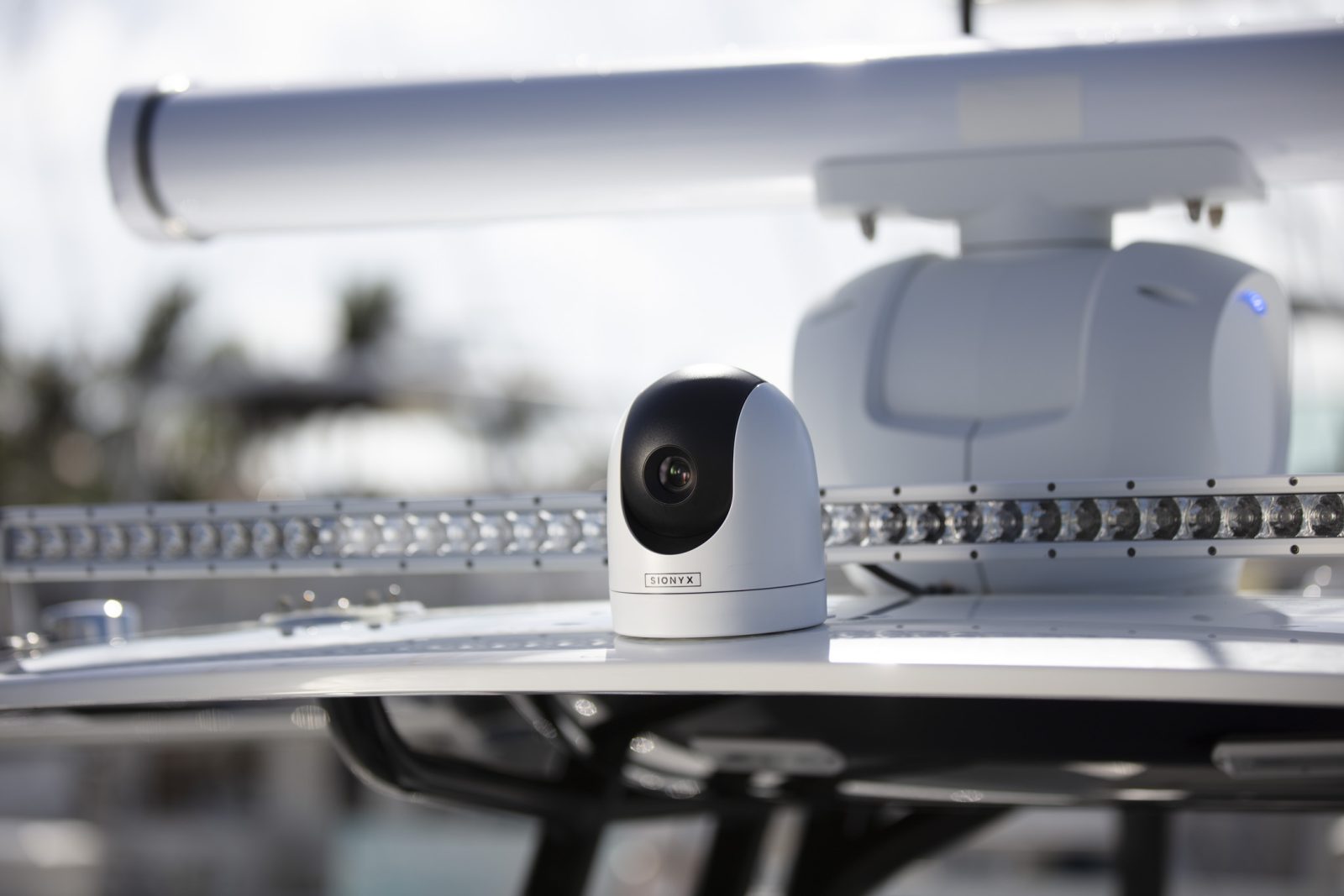
The new ultra-low-light marine digital camera system guides boaters of all skill levels safely through any maritime environment
BEVERLY, Mass. (July 12, 2022) – SIONYX, a leader in digital color night vision technology, announces the launch of Nightwave, the first-of-its-kind marine camera system. Built around the brand’s proprietary Black Silicon BSI CMOS sensor, Nightwave allows mariners to navigate safely by easily spotting hazards and debris in moonless starlight without additional illumination, maximizing time on the water.
Built to operate in the toughest marine environments, the night vision camera is IP67 waterproof and shock rated. Nightwave seamlessly integrates to any vessel’s electronics by connecting to major brand MFDs via the analog video output. With flexible mounting and setup, Nightwave can also connect to a mobile device via Wi-Fi for an enhanced user experience. At an MSRP of $1,595.00, Nightwave sets a new standard of affordability for night vision, making it accessible to boaters of all levels.
“Developing solutions to increase safety on the water and navigate with confidence is part of our mission,” said Gio Lepore, Global Product Manager at SIONYX. “Nightwave’s digital color night vision allows anglers and boaters to be active on the water as early or as late at night as they’d like. This technology provides clear color images in near-total darkness and is simple to install and operate. It should be a standard piece of equipment on every vessel to ensure a safe trip at any time.”
Notable Features Include:
- <1mlx moonless starlight sensitivity allows mariners to see well beyond human eyesight and detect a man-sized object at 150 meters
- The system’s high resolution detector provides upgraded quality imaging capability in near total darkness
- Wide 44o field of view increases situational awareness to spot unexpected obstacles, debris, markers, vessels, and more
- Convenient installation flexibility: permanent mounting hardware is included, as well as a standard 1/4”-20 mount interface.
- Nightwave can be oriented ball-up or ball-down, to meet any challenging mounting requirements
- Lightweight and portable (870 G)
- Stay up to date: the latest firmware and software releases are available through the SIONYX mobile app
The Mobile App:
Nightwave mobile app features include:
- Connect to Nightwave for additional features and capabilities
- Set camera orientation and position for optimal viewing experiences
- IR cut filter control
- Over the air updates
- Manage firmware updates to your Nightwave camera through Wi-Fi
- Initial release will be android compatible, with iOS releasing shortly after
- Future releases will include additional features such as wireless video streaming
Built rugged, connected, and capable, Nightwave is an impressive addition to any vessel. For more information on SIONYX or to reserve your unit, please visit www.sionyx.com/products/nightwave.
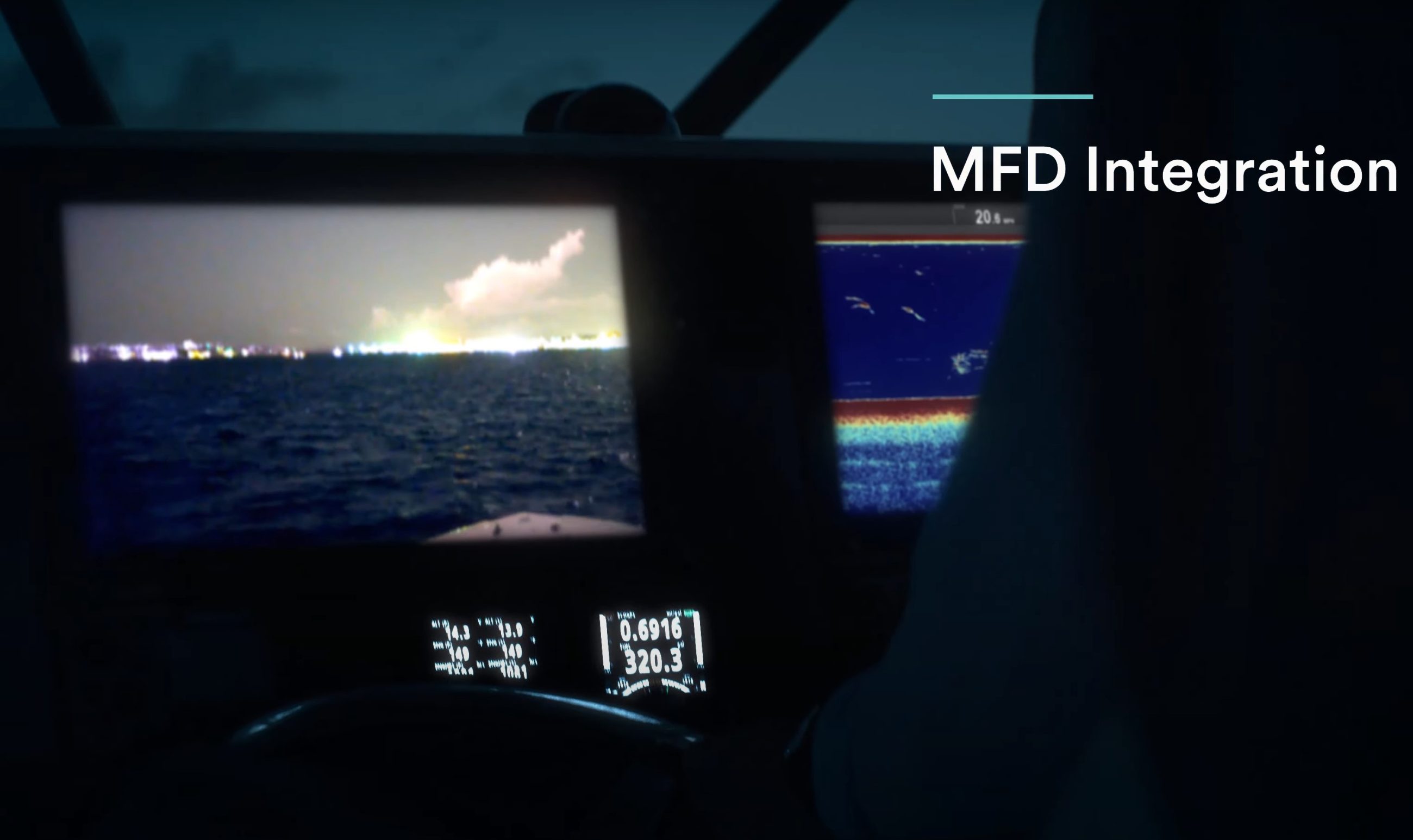
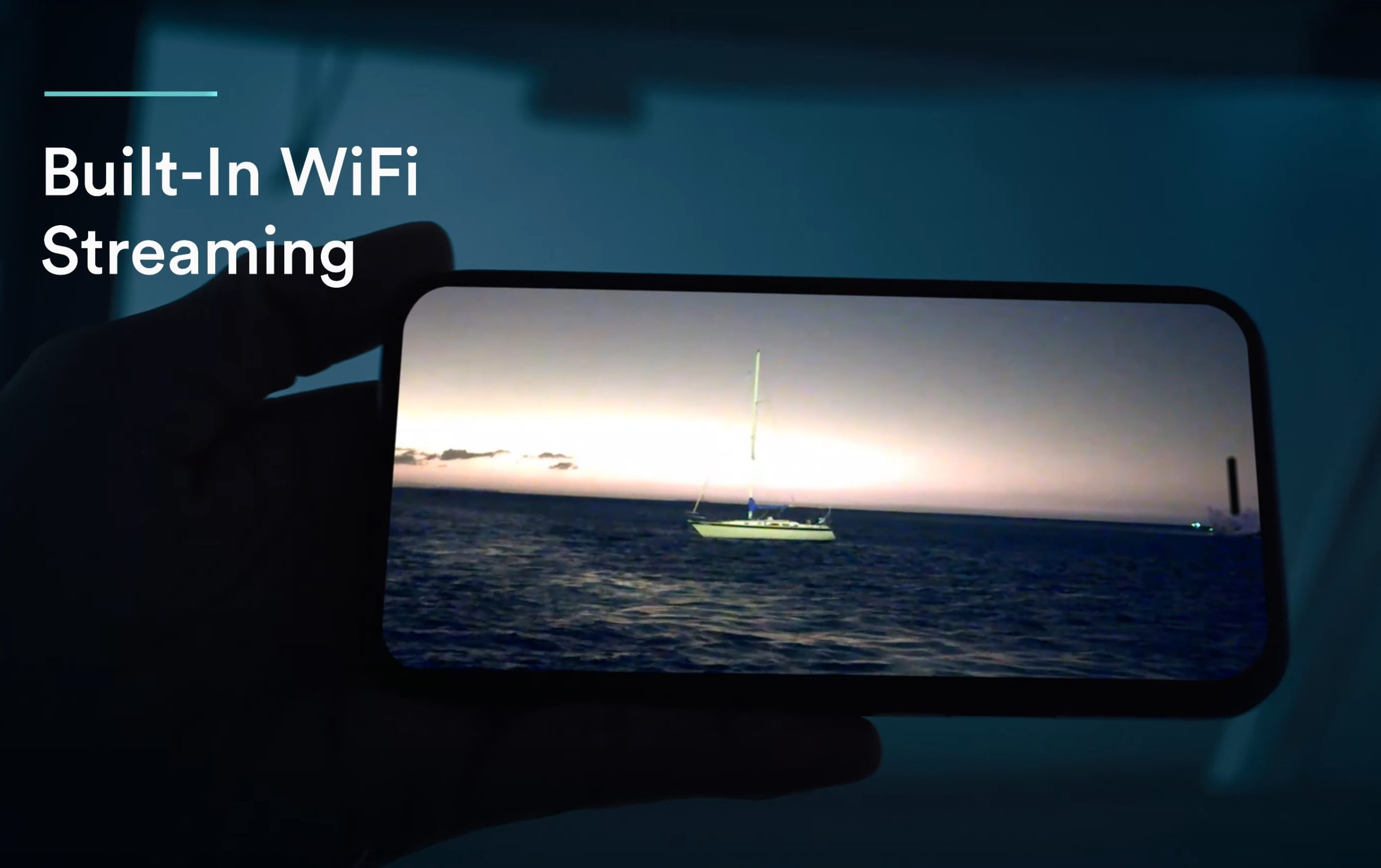
Panbo publishes select press releases as a service to readers and the marine electronics industry. The release contents do not reflect the opinion of the editors and are not fact checked by the editors


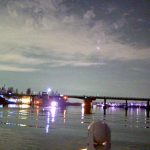
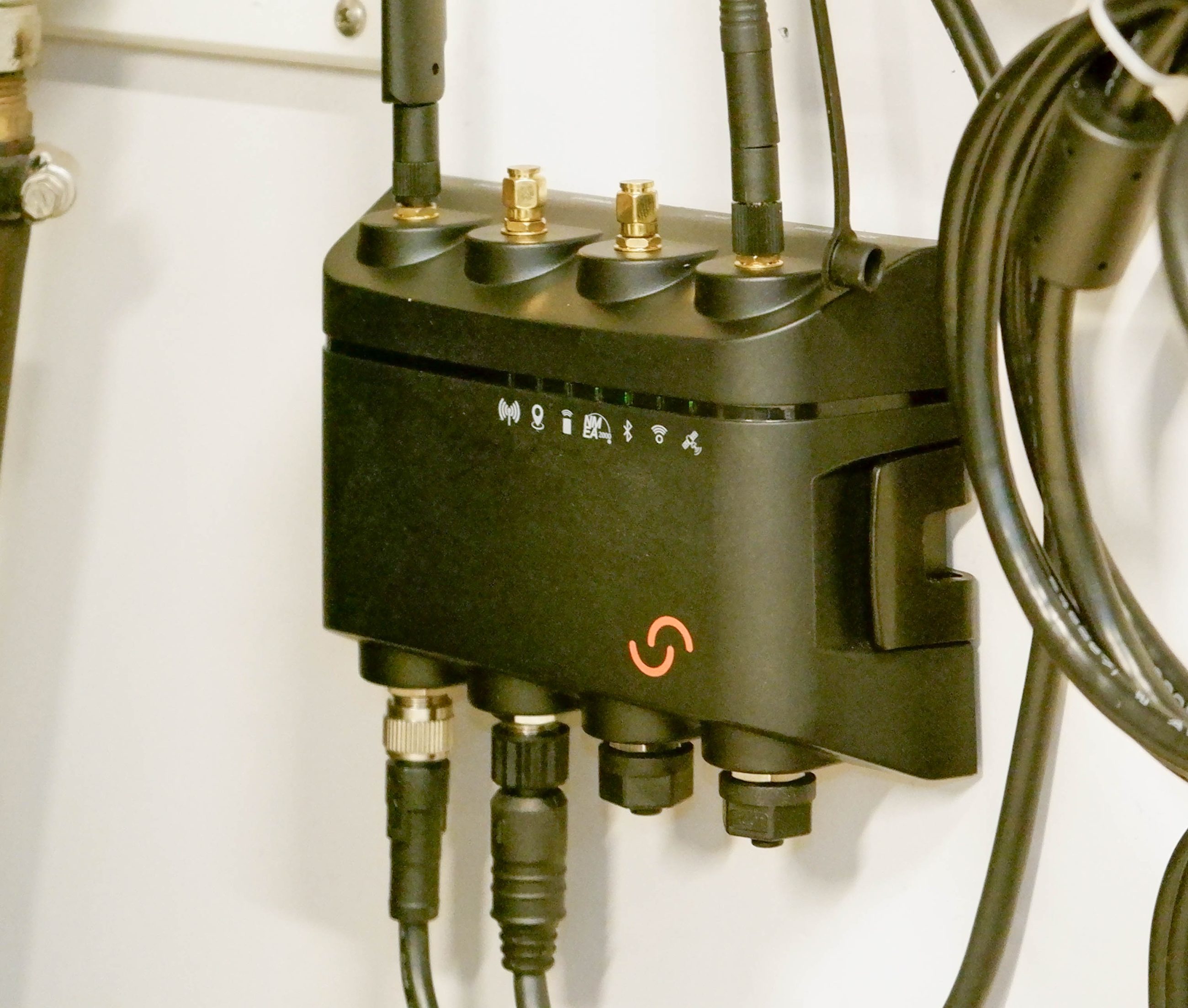









I expect Nightwave to be a very interesting product because I’ve seen for myself how useful Syionx low light technology can be as seen with their handheld Aurora model. Ben S was also impressed:
https://panbo.com/sionyx-aurora-night-vision-camera-demo-ride/
It’s an analog camera, right? So it’s only going to work in a direct-connect scenario, straight into a single chartplotter. or to an analog-to-ip bridge (like an Axis).
Good point, Bill. The MFD output is definitely analog, as in “NTSC/PAL Analog video connection (SMA, BNC, or RCA).” But there’s also WiFi streaming (though apparently not in first release) and the spec sheet mentions a “Digital video cable USB”… so I’m not sure what’s going inside the device.
PS. It’s generally true that “it’s only going to work in a direct-connect scenario, straight into a single chartplotter, or to an analog-to-ip bridge (like an Axis)” except that some high-end Garmin MFDs have a built-in video encoder. I’ve long thought that to be a neat and under-appreciated feature and wonder if any other manufacturers have added it?
https://static.garmin.com/pumac/Camera_Integration_Guide_EN.pdf
“Current GPSMAP® products (excluding the 8000, 8200, 8500, 7×1, 7400, and 7600 series chartplotters and older chartplotters) have built-in video encoder functionality and will share the video connected over their composite video input across every chartplotter screen on the boat.”
Raymarine Axiom XL screens have analog video encoding too. There are 2 analog inputs on Axiom XL. Encoding is available on input #1 only.
The encoded steam appears as a video source on any other Axiom screen connected with RayNet Ethernet to the network.
We did this originally to support analog FLIR thermal cameras, and legacy marine cameras from Raymarine and others. The encoder works very well with pretty much any analog video source.
I’ll echo what Jim says. I just completed an install of a pair of Axiom Pro S MFDs on a boat with an analog FLIR and it worked perfectly.
-Ben S.
It’s kind of odd, IMO. They make it look similar to the FLIR pan/tilt design, but it looks to be a fixed camera, no mention of being able to move it remotely. It has wifi streaming, but no hard-wired IP connectivity?
I’ve tested Sionyx sensors in other cameras a few years ago. Compared to modern low-light imagers, I don’t think they have a significant enough edge to justify the price, and the image tends to be more grainy and colorcast, IMO.
You can get very rugged low-light analog cameras that would have comparable performance in realistic conditions for 1/4 the price. Or an analog/IP for way less than 1/2 the price.
Curious to see some unvarnished real-world shots from this unit.
You’re right, Brk, there’s no remote pan and tilt, just “Manual vertical tilt adjustment” after installation. But it does have a field of view 44 degrees wide, whereas a true thermal cam like the FLIR M232 has an FoV of 24 degrees.
Can you please suggest some specific less expensive low-light cams that compare to the NightWave in your opinion?
As one example, the Hanwha XNV-6085 have CVBS and IP outputs, a varifocal lens, image stabilization, and several other features. It retails for about half the price of this Sioynx camera, though it is designed for a more traditional “hanging from the soffits” security camera mounting position.
There are lots of cameras based on updated sensors that are delivering really good low light images, particularly when we consider these cameras should be used to *augment* your views, none of them are going to let you navigate in extreme darkness or thick fog.
The 44 degree FOV may not be a benefit, Sionyx doesn’t list the pixel specifications of the camera, so it’s hard to say what you are ultimately going to get detail-wise.
Or, something like a common camera (Ray CAM220, etc.) plus an IR illuminator would give better overall results, for less money, in practical scenarios.
https://www.hanwhasecurity.com/product/xnv-6085/
Thanks, but I’ve had a lot of experience with the Raymarine Cam220IP and the original Syonix Aurora, and there’s simply no comparison. IR illuminators like the 220’s just don’t reach very far — like 100′, maybe — while the Syonix tech gathers an amazing amount of light at all ranges.
I also notice that the Hanwha XNV uses a 1/2″ CMOS sensor, while Syonix uses a 1″ CMOS (like what’s found in expensive full-frame digital SLR cameras). That’s a huge difference in light gathering potential, and it’s my understanding that Syonix purposely went with a relatively low 1280×720 resolution so that each pixel represents more of the already large CMOS.
I’m not sure if the NightHawk uses the same CMOS as the Aurora — it might be better (and they should post more detailed specs) — but here’s a detailed review of the Aurora which further suggests that it’s well beyond “low light” security cams:
https://www.dpreview.com/reviews/review-color-night-vision-with-the-sionyx-aurora
When I said IR illuminator, I meant from a quality external unit, not the on-board LEDs on the CAM220, I would agree its onboard LED illuminators are not sufficient.
I’ve used the Aurora and overall found it to be pretty lacking in extreme low light. In moderate light, such as a very early morning or late night cruise, it really wasn’t all that impressive compared to some security cameras I tested it against.
Keep in mind the Hanwha camera is a PTZ unit, not just a fixed camera.
The Bosch Starlight cameras also offer extremely good low-light images, are less than the Sionyx unit, and also have PTRZ capability. They’re about $1,100 street price.
Hmmm… checked out the latest (and impressive) Bosch Starlight and again it has a relatively small 1/1.8″ CMOS. And their lowlight lux claims are: Color: 0.0078 lx (F1.3), 0.0247 lx (F2.3), and Mono: 0.0008 lx (F1.3); 0.003 lx (F2.3)…
https://commerce.boschsecurity.com/us/en/FLEXIDOME-IP-starlight-8000i-4MP-X-series/p/80372376459/
Meanwhile Syonix claims “<1 millilux moonless starlight sensitivity" in color and the only cam I can find that claims similar is probably super expensive, and maybe not available to civilians:
https://www.x20.org/color-night-vision/
Problem with IR illuminators at sea is they don’t reach very far, even the biggest external units. They might work for docking at close quarters or navigating a narrow channel, but other than that, no chance.
I have IR units that can illuminate several hundred meters. This isn’t stuff you get on Amazon though. One of the products I’ve installed for a number of marine low-light applications is from iluminar: https://www.iluminarinc.com/
Coupled with a good low-light camera you can get images in extreme low-light that are usable enough to run AI applications on for navigational assistance or other kinds of object detection. By this I mean the images are not overly grainy and noisy, and the shutter rate is sufficient to not have motion blur from an average cruise speed in very dark conditions.
For the purposes of what is being covered here, the sensor size isn’t that relevant, they’re all large enough to produce good images, and larger sensors do not always directly equate to low light performance. Larger sensors do require more expensive lenses to take full advantage of their capabilities though.
I’ve tested several Sionyx sensors first-hand, and I take their published claims with a very large grain of salt, in fact speaking of grain, the images at their claimed min illumination levels were almost nothing BUT grain. They are also light levels where no person would reasonably be boating.
For the light levels where people are likely to be boating, there are more cost effective options than the Sioynx camera. Most of these options are going to have more features, a better track record of shipping and supporting their products (have you followed the Aurora firmware and wifi link issues?), and more connectivity options. I’ll admit though that they won’t look as elegant as the Sioynx unit.
But I gather that physical pixel size — in other words, CMOS / resolution — is the main factor in low-light performance, though there are certainly others. Some good dope here:
https://www.e-consystems.com/blog/camera/technology/4-major-factors-that-determine-the-low-light-performance-of-a-camera/
I don’t know what you mean by “They are also light levels where no person would reasonably be boating”. I tried the Aurora around my home harbor, Camden Maine. There’s a tight inner harbor with a lot of shore lighting, a scary-at-night outer mooring field with over 200 boats and little shore lighting, and then Penobscot Bay, which is “dark as a pocket”. I found it useful at all ambient lighting levels, and when I let people try it, the response was almost invariably “wow!”
But I definitely had issues with the Aurora WiFi link and don’t know if that was ever resolved.
A hearty second to the impressive performance of the Aurora and unfortunate issues with WiFi connectivity. I’m hopeful the Nightwave will improve on those issues.
I hope to get my hands on one shortly to see how it compares. I’ve used a lot of very impressive low light cameras, including the visible light camera in the FLIR M365C I have on Have Another Day. It’s great, but head to head, it gets beat by an Aurora priced at $400.
I’d hoped the Nightwave would have pan and tilt, but without having experienced it hands-on, I can’t say too much about that yet.
-Ben S.
No, sensor size is not really a leading indicator of low-light performance any more (last 10 years or so). There is so much being done in the processing layer with things like multi-exposure WDR and just general image processing capabilities. This is presuming of course that we are talking about average sized sensors used in surveillance cameras. If you get into the super-small sensors on some cellphones or cheap IoT devices, then it is a different story.
Along with the sensor, you also have to look at the lens, a poor quality lens can severely impact low-light gathering, and larger lenses are more expensive. I have seen several camera manufacturers couple of a cheap lens to a good sensor and ruin the performance.
When I mentioned light levels where no person would be boating I am talking about the 1-millilux specifications. For even typical “very dark” boating conditions, there is generally enough light that a quality modern camera can produce a very helpful image.
I have seen lots of people be surprised by the Aurora handheld too, but they have typically been people who are not as familiar with current state of the art low-light imaging products.
My primary point in my comments is that there are other cameras that can either produce a comparable image for less money, or provide more features for the same money as this Sionyx camera. I will also admit I am saying this without having tested this unit (yet), but having hands-on experience with Sioynx sensors and products, and extensive hands-on experience with several other surveillance products currently on the market.
Sensor size is pretty much central to low light performance, all other things being equal. Its physics after all?
No, sensor size is not as central as you think, that is what I am saying.
That statement is like saying higher HP boats will go faster “all other things being equal”, all the other things are never anywhere near equal.
“When I mentioned light levels where no person would be boating I am talking about the 1-millilux specifications.”
Wanna bet? Never been to North?
When its late in the year and middle of a moonless night and overcast, there is no light to speak of.
Yes, lived and boated in NH for 15 years.
NH, 43N latitude? Try like 70N…
“They are also light levels where no person would reasonably be boating.”
What???
Some people do boat in pitch black night in the North – some even for fun. That is why I have three radars – one doppler radome and two open arrays – two thermal imagers and would like a low light camera as well.
If any of you guys know how I would plug in the Nightwave camera to a Humminbird Solix 12 please let me know. Should be an analog port but not seeing where
Not positive, but don’t think that any Solix has a video input.
Ordered from West on back order. Received packaging and immediately set about swapping out the USB cord supplied for the analog connector that is preinstalled. No joy (and lots of frustration!) Nowhere do the instructions or elsewhere indicate the USB is useless (per support, will transfer video/images but not sufficient power to operate the camera – why then is there a USB and directions to install?)
UPDATE (Because I can’t figure out how to start a new topic)
Would be interesting to get an update from folks that purchased the Sionyx when it first came out and how it has performed. Also, any updates or improvements? Thx.